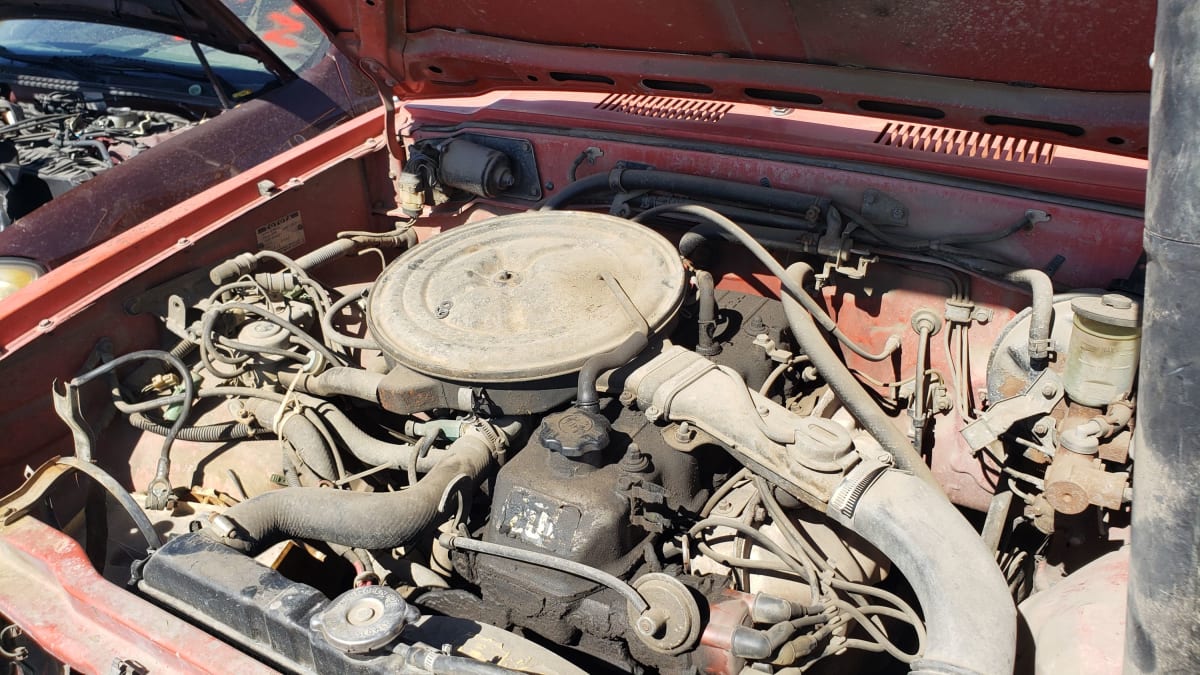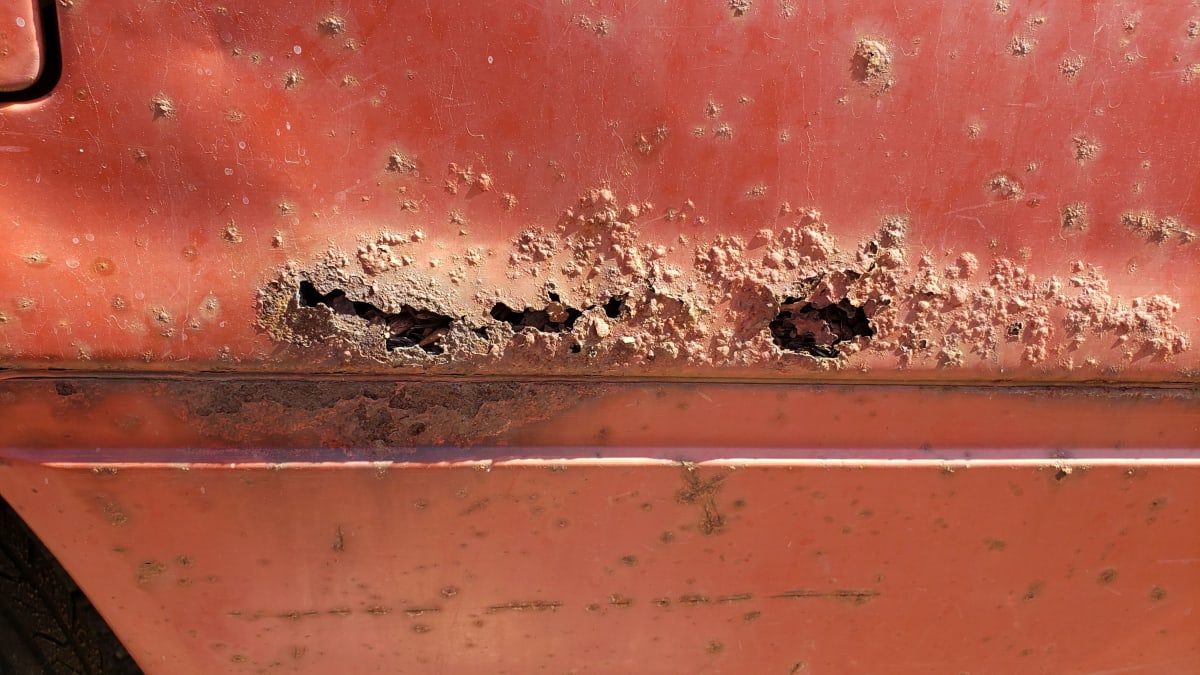Toyota began selling pickups in North America in 1964, when the Stout 1900 appeared on our streets. The Stout never really caught on here, despite its cool name, but a more civilized small Toyota pickup proved to be an enduring sales success on our side of the Pacific: the Hilux. Today’s Junkyard Gem is a first-model-year example of the third-generation Hilux, retired in Colorado after more than four decades of hard work.
Toyota began selling the Hilux in the United States under its home-market name in the late 1960s, but phased out that name here during 1973. After that, the North American Hilux became known as the Toyota Truck. So, the correct model name for this truck is Truck.

In keeping with that naming tradition, Toyota later called the MasterAce Surf the Toyota Van in North America. Nissan and Mitsubishi likewise named their mid-engined Vanette and Delica vans the same way on our shores (the Nissan Van and Mitsubishi Van). Sadly, the Corolla was not renamed the Toyota Car for the American market. In any case, most American Hilux owners refer to their Trucks as Hiluxes these days.

The second-generation Hilux sold very well here, and its reign stretched from 1972 through 1978. Because so many were sold and they held together so well, I still find some second-gen Hiluxes during my boneyard travels. The bigger third-generation Hilux was sold here for the 1979 through 1988 model years, and it proved so indestructible that you’ll still see them everywhere in the non-rusty regions of our continent. The final new Hiluxes sold in the United States were 1995 models, after which the Tacoma shoved them aside forever.

This Truck has the 2.2-liter SOHC 20R four-cylinder engine, which was rated at 90 horsepower and 122 pound-feet. The U.S.-market Celicas of this era got the same engine.

The 20R and its 2.4-liter successor, the 22R, remain legendary for their reliability. This is a genuine Warlord Grade engine.

I’ll bet this Truck covered an impressive number of miles during its life, but Toyota used a five-digit odometer here and so we can’t know whether it has 59,008 miles or 659,008.

The underhood emissions sticker tells us it’s a “49-state” vehicle, not originally sold in California.

1979 Truck buyers could get an automatic transmission, but I’ve seen very few so equipped.

This one has the optional five-speed manual, which was considered sufficiently special that Toyota advertised it on the tailgate.

There’s some rust, but nothing too serious by the standards of 1970s Japanese vehicles.

This Fujitsu TEN factory AM/FM radio would have been considered a frivolous luxury in most late-1970s work trucks.

Would you believe air conditioning in a small truck of this era? That’s very unusual.

Why is it here? A pickup this size would be considered too small and too underpowered by most potential buyers these days, and then there’s the fact that few American drivers can operate a manual transmission. Maybe something expensive broke in the powertrain and that was all she wrote.

At least it will go to the crusher with a $20,000,000 Daffy Duck note on the dash.
Rides like a car and works like a horse.
One tough new truck that knows how to take it easy.
What makes football players #1 is what makes Toyota trucks #1. So says Forrest Gregg.
Read the full article here


